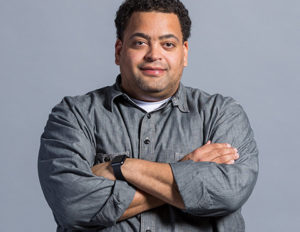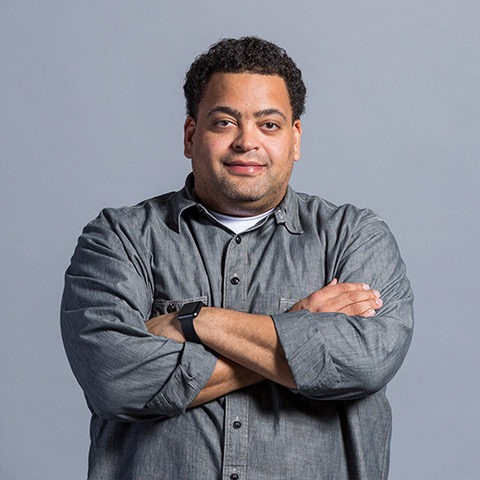http://www.thenerdelement.com/2017/10/09/viz-media-announces-nycc-2017/ Viz Media announced several acquisitions this weekend at New York Comic Con. The full press release is below. What do you guys think? Excited? Let us know in the comments!
VIZ MEDIA ANNOUNCES NEW MANGA, ART,
AND CRAFT BOOK ACQUISITIONS AT
NEW YORK COMIC CON 2017
Newly Announced Titles Include PERFECT EDITIONS OF 20TH CENTURY BOYS And 21ST CENTURY BOYS, ONE PIECE COLOR WALK Hardcover Art Book Collections And More!
San Francisco, CA, October 9, 2017 – VIZ Media, LLC (VIZ Media), a premier company in the fields of publishing, animation distribution, and global entertainment licensing, announced a variety of notable new publishing acquisitions during its official panel event held this past weekend at New York Comic Con 2017.
The new acquisitions set for release in 2018 include the fairy tale-inspired fantasy adventure, SLEEPY PRINCESS IN THE DEMON CASTLE, as well as impressive PERFECT EDITION releases for Naoki Urasawa’s two-time Eisner award-winning manga series, 20TH CENTURY BOYS, and its sequel, 21ST CENTURY BOYS. The PERFECT EDITIONS offer 2-in-1 omnibus releases of both series and will feature new cover art by Naoki Urasawa.
Also scheduled for release in 2018 will be a pair of ONE PIECE COLOR WALK art books that each feature bold color images and character illustrations from the world’s most popular manga series presented in hardcover box set editions. Finally, VIZ Media also announced AMIGURUMI: SAN-X CROCHET PATTERNS, a craft book featuring designs for a host of popular San-X characters like Rilakkuma, Sentimental Circus, and more!
Additional information on each of these titles will be announced in the near future.
SLEEPY PRINCESS IN THE DEMON CASTLE, Vol. 1
Rated ‘T’ for Teens · Debuts Summer 2018
Sshhh! Princess Syalis is trying to get a good night’s sleep. Some shut-eye. Forty winks. Catch some Z’s. Long ago in olden times when people and demons lived together in—well, disharmony, really – a demon king kidnaps a human princess and imprisons her in his castle. Bereft, the princess’s subjects beat their chests in anguish…until a hero arises to spearhead Project Rescue Our Princess! While waiting for her knight in shining armor, what’s an imprisoned princess to do …? Teddy-bear guards with bat wings are all very well, but her dungeon cell is bo-o-o-ring! So, she decides to while away the long hours by sleeping. Now if only she could get comfortable…and didn’t suffer from insomnia…
20TH CENTURY BOYS: THE PERFECT EDITION
Rated ‘T+’ for Older Teens · Debuts Fall 2018
The PERFECT EDITION presents a 2-in-1 bind-up of Naoki Urasawa’s two-time Eisner award-winning manga series.
Humanity, having faced extinction at the end of the 20th century, would not have entered the new millennium if it weren’t for them. In 1969, during their youth, they created a symbol. In 1997, as the coming disaster slowly starts to unfold, that symbol returns. This is the story of a group of boys who try to save the world.
21ST CENTURY BOYS: THE PERFECT EDITION
Rated ‘T+’ for Older Teens
War is over. The Friend is dead. Mankind no longer faces the threat of extinction. Peace has finally come to Tokyo… Or has it? The mystery still remains. Nobody knows who the Friend was and where he came from. The only clue is hidden deep within the memories – the memories of the hero Kenji. It is time to open Pandora’s Box to discover what is left at the bottom.
ONE PIECE COLOR WALK: EAST BLUE TO SKYPIEA
Debuts Summer 2018
Color images and special illustrations from the world’s most popular manga, ONE PIECE! This compendium of the first three Color Walk art books features 300+ pages of beautiful color art and conversations between creator Eiichiro Oda and other famous manga artists.
ONE PIECE COLOR WALK: WATER SEVEN TO PARAMOUNT WAR
Debuts Summer 2018
Color images and special illustrations from the world’s most popular manga, ONE PIECE! This compendium of three Color Walk art books features 300+ pages of beautiful color art and conversations between creator Eiichiro Oda and other famous manga artists.
AMIGURUMI: SAN-X CROCHET PATTERNS
Debuts Summer 2018
Featuring Rilakkuma, Sentimental Circus and more!
Amigurumi are cute crocheted stuffed animals from Japan. Combine amigurumi with San-X and you get the most adorable crocheted characters! This book of patterns with full-color photographs will show you how to make characters like Rilakkuma and friends, Tarepanda, Sumikko Gurashi and more, plus their accessories.
For additional information on manga and activity book titles distributed and published by VIZ Media, please visit VIZ.com.
About VIZ Media, LLC
Established in 1986, VIZ Media is the premier company in the fields of publishing, animation distribution, and global entertainment licensing. Along with its popular digital magazine WEEKLY SHONEN JUMP and blockbuster properties like NARUTO, DRAGON BALL, SAILOR MOON, and POKÉMON, VIZ Media offers an extensive library of titles and original content in a wide variety of book and video formats, as well as through official licensed merchandise. Owned by three of Japan’s largest publishing and entertainment companies, Shueisha Inc., Shogakukan Inc., and Shogakukan-Shueisha Productions, Co., Ltd., VIZ Media is dedicated to bringing the best titles for English-speaking audiences worldwide.
Learn more about VIZ Media and its properties at VIZ.com.
The post Viz Media Announces Acquisitions at NYCC 2017 appeared first on The Nerd Element.


